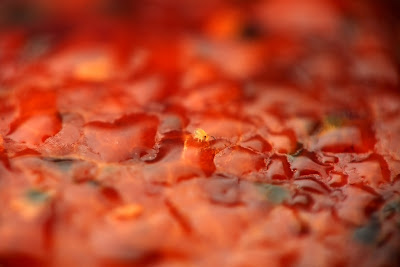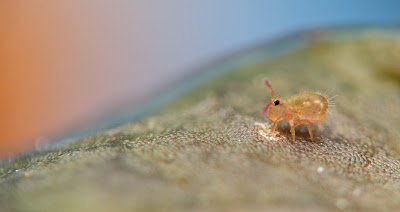That's how it has been for a while now with me, constraints on free-time and just being, busy-busy!
Then if we add in the fact that those of you who have followed my blog for the two years (yeah,2 years) that it's been in existence will know that it is based around photography and so it naturally follows that weather plays an ever important part in being able to get any pictures at this end of the year.
Especially when you wake to these conditions...
I did manage to snap another phenomenon that I sometimes see at this time of the year,when the sun is low in the sky...
The scientific name is 'Parhelion' meaning 'beside the sun' and is also known as a mock-sun or phantom sun.
I think a simple explanation is that it's due to ice crystals in the sky bending the light?
We have also suffered some really hard overnight frosts of late and that will be bad news for any insects that were still around...
I've enjoyed checking out the frozen puddles though-sometimes there are interesting patterns to be found...
A somewhat distressing development since my last update is that the ash-dieback that I spoke of has been confirmed in my local woods now...
Let's get back to some invertebrates shall we? I featured a creature in my last update that I nicknamed 'The Blob' and I've still not been able to establish a positive identity for these yet. I have however discovered another colour variation...
 |
| The Blob mkll |
As this one seems to be a lot redder, more orange at least,I think my latest guess might be that these are vampire slugs! Wouldn't that be great,if there were such a thing?
When all else fails,there is one critter at least that has its own built-in antifreeze and so isn't so concerned about the temperature-therefore,as long as I feel brave enough to get out there with my camera in the frost, they make ideal substitutes for the lack of other bugs and insects. What am I talking about? Why Springtails (Collembola) of course...
Click on this,or any photo for a larger view
 |
| Sminthurinus aureus |
That is if you can find any of course. I've left this as taken to show just how small some of these springtails really are.
 |
| Dicyrtomina saundersi |
Here's another, this on is taken at the same mag. as the first,I have only cropped the top of the photo a little. This is a juvenile dicyrtomina species and even at this stage they are larger than the sminthurinus.
Compare then this adult springtail (I think this is D.fusca) and it reinforces just how tiny the sminthurinus are...
 |
| Dicyrtoma fusca? |
Whilst observing one of the dicyrtomina species of collembola, I noticed a behaviour pattern that I'm not sure I've seen before. One particular character was standing up on it's hind legs and sort of, pawing at the air with it's front legs...
Now if that seems an odd thing to have photographed,consider the following...
Following a recent macro session:
My other half: "Did you find anything interesting today?"
JJ: "I did but you'll never guess what it was"
O/H: "Erm, spider?"
JJ: "Nope, you won't guess"
O/H: "Springtails?"
JJ: "Well, yes but that's not exactly right"
O/H: "A new species?"
JJ: "I wish! Nope..."
O/H "C'mon then, I know you're dying to tell me"
JJ: "You won't believe me"
O/H/ "Try me..."
JJ: O.K. Then, springtail sperm..."
O/H. "Don't be ridiculous, even I know how small springtails are. how could you possibly know?..."
Here it is then, 'the proof of the pudding' and the correct term for this is 'Spermatophore'-that is what you can see in front of this little springtail that looks like a tiny bubble on a stalk.
Rather than direct contact with the female,many males will produce these small packets of sperm on short stalks. To fertilise her eggs,the female must then locate the sperm packet and take it up into her reproductive tract.
In the most basic process,the males use a sort of 'hit and hope' method by just scattering the packets anywhere the females may be likely to visit.
The male may also use his specially adapted antennae to drag the female across the spermatophore.
And here's the most dramatic and interesting way that Johnnie Cash himself would be proud of?
Some males will use the 'Ring of Fire' method. It involves a male locating a sedentary female and quickly depositing a 'fence' of spermatophore that she must either spring to escape or is forced to walk across.
"I fell in to a burning ring of....erm...sperm?"
I'll complete this update with a couple more frost shots.
Until the next time...










4 comments:
Brilliant as ever JJ! :-)
Shame about the Ash dieback though.... not sure what the situation is on this in Shropshire.
Maria
Thanks Maria-yes, it was expected and I would guess it'll be where you are too. People are only just becoming aware of it and so new confirmed sites are turning up all the time now.
Hi, just found your blog and already I've learnt about Springtail's erm..."ring of sperm" exploits. Amazing! Thanks, I'm off now to learn more stuff in your excellent blog! :)
Thanks for your comment and interest in my blog-will be updating in the next few days
Post a Comment